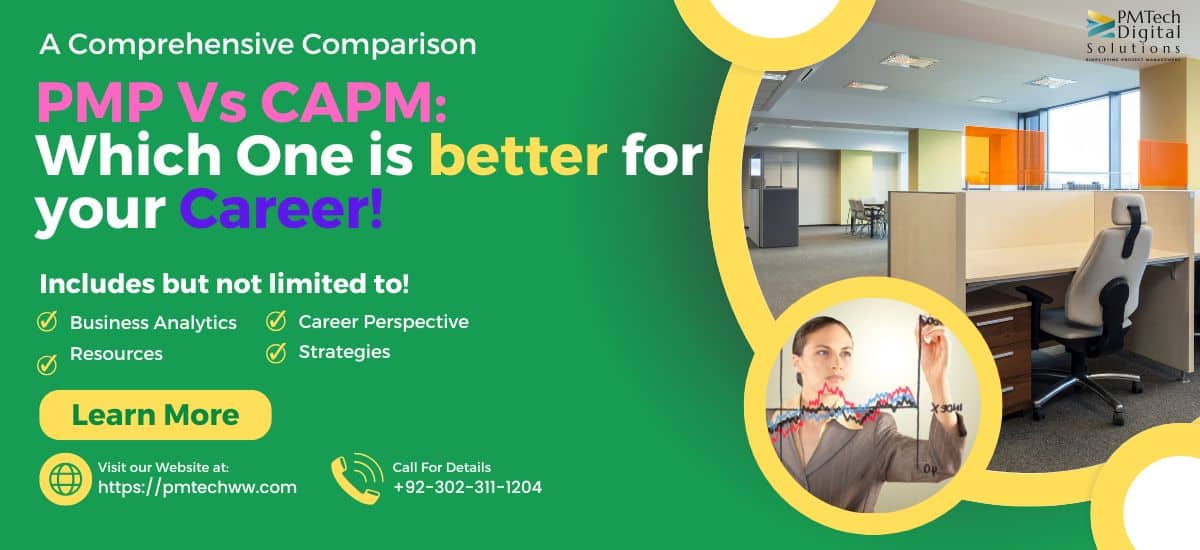What is business agility, and why is it so important in our fast-paced business environment today? Agile organizations represent business agility that is characterized by quick adaptability to changes, innovation at speed, and competitiveness in the face of disruption, much like agile businesses that demonstrate this ability through their continuous improvement and problem-solving capabilities. It is a pragmatic paradigm that has outlived its software development inception to evolve as a fundamental enabler of contemporary business resilience. This article presents the business agility definition, its main components, and the ways companies can succeed in the journey towards truly agile business in a highly uncertain business environment.
Key Takeaways
- Business agility is an organization’s ability to adapt quickly to market changes by embracing principles such as rapid response to feedback, flexibility, and adaptability, which are critical for maintaining competitiveness amid digital disruption.
- The journey to achieving business agility involves stages from acting as adaptive networks to measuring progress with specific indicators, and requires developing agile organizations that integrate next-generation technology with a focus on value stream mapping and customer feedback for continuous improvement.
- Organizational agility is reinforced by fostering a culture of innovation, investing in digital transformation, and adopting an Agile Operating Model that encourages self-organized teams, employs agile tools for real-time collaboration, and emphasizes customer-centric product development and continuous learning.
Decoding Business Agility
Agility in business is a characteristic of an organization that enables it to change quickly with the market and remain competitive within the digital disruption era. This idea came from activities in agile frameworks employed in the development of software that are supposed to control the unpredictable results and evolving requirements.
Business agility adoption permits an organization to quickly react to feedback, making them to continuously deliver value for customers and ultimately enabling them to have a competitive advantage over their opponents. Knowledge of the business context that includes organizational, company, client, technology, and solution factors is a key to successful business agility implementation that implies smooth and convenient adaptation to the changes in production and market in a productive and cost-effective way.

The Essence of Business Agility
A nimble and flexible organization is what thrives in constant change by seizing new opportunities and adapting to customer needs. Agility goes far beyond velocity alone. It involves flexibility, which is important for organizations to keep their consumers in the changing market of today.
Key Components of Agile Organizations
Agile organizations are characterized by five distinct characteristics:
- They function as networks made up of agile teams.
- Their values include alignment, accountability, expertise, transparency, and collaboration.
- Quick decision-making processes and continuous learning cycles take priority for these organizations.
- They prioritize taking swift action with 70% certainty rather than delayed action with complete certainty.
Next-generation technology has been embedded into every facet of agile organizations operations, and this has further increased their ability to create value as well as respond quickly to changes. The North Star is the common purpose or vision that anchors these entities and puts stakeholders at the heart of all decisions. Agile organizations also target a sustainable work rate that supports even productivity and quality output, and the welfare of the team has to remain intact.
Further Reading: Mastering Agile Methodologies: Ultimate Guide To Transformative Project Management
The Journey to Achieving Business Agility
Organizations grow, and in the process, the inherent dichotomy between a growing hierarchical structure and an interactive entrepreneurial network appears. Such pressure is usually the cause of the latter’s suppression. For the hybrid-work era, in this specific business environment, having a clear way of getting to agility is vital for organizations as they deal with the ever-changing circumstances.
Becoming agile is a path of being able to adjust easily to a continuous flow of challenges and so remains reactive and in step with the changes occurring around. This capability of nimbleness is not only related to survival but also to gaining a momentary competitive edge in a volatile market place and sets the platform for becoming and staying a market leader through constant innovation and adaptability.
Stages of the Business Agility Journey
Business agility is often kicked off through the networked business operating in extremely flexible ways to respond immediately to customer demands and new opportunities. Usually, one interdisciplinary team conducts the initial experiments in Agile adoption before others follow suit.

Organizations progress along this journey continuously adjusting to the changing requirements of customers by experimenting and re-evaluating priorities and closely monitoring the market that is changing rapidly.
Measuring Progress Along the Way
Checking the progress is critical to make sure that the business agility journey is going in the correct direction. Using metrics and keeping track of them on a regular basis is a guarantee that the Agile practices being implemented by an organization support the business to move into success. In order to monitor progress, critical metrics include cycle time, velocity, process efficiency, and throughput.
Higher productivity levels, value delivery capacities, customer satisfaction rates, and stakeholder engagement can be considered as further indicators of the performance of agile practices within a company.
Unlocking the Value Stream: Driving Business Agility
One of the ways towards business agility lies in the recognition and implementation of the Business Agility Value Stream, which is a collection of methods that enable the organization to timely responses to opportunities or threats, thereby faster learning and beneficial results.
This way, businesses deliver value to their customers in a continuous manner by creating on-demand release capabilities. This in turn improves the overall performance and customer satisfaction due to quick action from the agile organization. The SAFe Business Agility Value Stream implementation is a core that supports a smooth transition from the stage of opportunity identification into product delivery in the shortest time to guarantee business agility and prompt response with creative business solutions.

Mapping the Business Agility Value Stream
Value stream mapping is a critical exercise that includes finding, representing on the picture, examining, and improving all required steps in delivering products or services to customers. It starts with getting the right people involved, identifying the potential value streams, and choosing one for concentration.
The selected value stream is then deeply analyzed to find the areas of improvement, and all such areas are continuously worked upon by both ongoing improvements. This habit contributes greatly to the constant delivery of valuable results to our esteemed clients.
Leveraging Customer Feedback for Continuous Improvement
Feedback from the customers plays one of the most important parts in the process of value stream mapping since such feedback allows the teams to see what parts need to be addressed. Taking this important feedback into account, teams can become customer-focused in creating their products or services.
Value streams provide visibility, which is required to identify and remove obstacles, so that value reaches customers much faster. This serves to satisfy the needs of customers very quickly.
Organizational Capabilities That Enable Agility
To develop business agility, organizations need to:
- Evolve from a hierarchy of authority to a network of competence
- Prevent the formation of organizational silos
- Enhance communication
- Promote knowledge sharing
- Use agile tools to enable a sustainable pace of development
- Encourage simplicity in design and processes
- Focus on the essentials and avoid unnecessary work
This shift and the use of agile tools play a crucial role in developing true business agility.
Building a Culture of Innovation
The culture of creativity is an essential attribute in keeping the agility of the entire organization. This entails being open to industry trends and professional viewpoints as well as fostering clear communication within the organization. Establishing an atmosphere that fosters experimentation and studies from trial and error perceives failure as a vital element of creating innovative practices, hence fostering a culture of continuous enhancement.

Investing in Digital Transformation
The embrace of the digital revolution is one of the vital aspects of business agility. It enables the firms to swiftly adapt to changes in the market and seize new opportunities using flexible technological solutions. The online software has an important function in business agility in that it allows quick change to the market. Through effective sharing of real-time information and swift pivoting, the flexibility of the entire system would be improved to ensure better performance.
The Agile Operating Model: A Blueprint for Success

The business agility operating model is vital in the success journey. Agile across the organization provides fast and flexible capabilities that are critical in responding to market changes. This blueprint is a roadmap for fast and efficient adaptations in order to ensure responsiveness in dynamic markets.
From Org Chart to Agile Network
The Agile Operating Model encourages a shift from inflexible hierarchical setups to more flexible, network-style structures. These types of arrangements support:
- Quick decision-making
- Flexibility
- Versatile role definitions
- Dynamic decision-making systems
Hybrid Approach: Combining Stability with Flexibility
The hybrid approach to business agility offers a more comprehensive solution ensuring that organizations continue to enjoy the benefits of the classic hierarchical systems such as hire and scale. At the same time, it develops flexibility by means of the value stream oriented agile networks within the organizations.

Cultivating Agile Mindset Across Teams
An agile mindset among teams is achieved through a corporate culture that encourages experimentation and considers mistakes as a learning opportunity. The development of agility attributes such as being proactive, skilled, adaptable, and fast facilitates teams with the ability to easily adjust to changes in conditions.
The Role of an Agile Coach
Agile coaches play a crucial role in guiding teams towards embracing agile principles and techniques. They:
- Guarantee that the team comprehends and correctly applies agile methodologies
- Provide mentorship to individuals within the team
- Tackle any challenges or hindrances that may arise during the adoption of agile practices
- Foster an environment of continuous learning
- Assist in refining and improving existing Agile processes.
Empowering Teams for Self-Organization
Self-organizing teams are one of the critical elements of agile business promotion. Such teams function under devolved control and are flexible; they change following the contours of a directive that is not defined as such. Their strength lies in their capacity for the process of continual learning and enhancing.
In order to manage self-organizing teams properly, it is crucial to build an atmosphere where team members are encouraged, supported, and trusted. This style of leadership creates the right conditions for these teams to prosper within organizations that are pursuing more agility.
Agile Tools & Technologies: Enhancing Organizational Agility
Information technology is one of the most important factors that enable the agility concept in the organization. It is instrumental in improving the property of quick reacting and adapting to change while maintaining high productivity during software delivery. In other words, instruments that are used in agile methodologies need to promote principles of flexibility, continuous improvement, and active teamwork among members.
Selecting Tools for Real-Time Collaboration & Data Analysis
The efficient selection of Agile tools can improve team collaboration and simplify data analysis. The choice of tools should be in line with the communication preferences of the team and suited for the team size and workflow complexities. In establishing appropriate fit, one possible way is to have test periods or demos of different tools in their own working environment. Asking users for feedback ensures that the given tool works well in daily usage.
Integrating Tools into Daily Operations
An efficient choice of the right tools is necessary for smooth incorporation into the day-to-day workings to support continuous planning and flexibility in dynamic changes. This integration shall make the workflows more efficient, keep all the team members well informed, and be closely aligned with the Agile principles. These errors are opportunities for growth and adaptation in the context of Agile’s never-ending improvement philosophy.
Adapting to Customer Demands: The Agile Way
Agile organizations operate on the principle of timely delivery of customer value. Organizations are also involved in proactive customer feedback solicitation, such that they use feedback directly to guide product or service development, continuously shifting priorities and evolving offerings based on customer preferences, following the agility principles that are inherent in these entities.
Customer-Centric Product Development
A customer-oriented approach is vital in the agile development process. The customers are actively involved in the co-creation of products and services in agile organizations using such collaborative design methods as prototyping and digital feedback channels. This is where business agility value stream comes in. Using Minimum Viable Product (MVP), they quickly create and refine based on valuable customer feedback. This promotes business agility values as part of an organization’s corporate strategy for maximum development.
Continuous Learning & Adaptation
For agile companies, sunk costs are considered an investment in learning, especially when the MVP hypothesis is proven incorrect. This reflects their emphasis on adapting and learning. If the MVP ends up being successful, funding is allocated for iterative development through customer interactions and market feedback. Focus is the approach of valuing results such as return on investment and customer satisfaction rather than just finishing tasks, which is in line with the agile principles of the importance of outcomes over outputs.
Further Reading: Key Benefits of Agile Project Management Consultancy Services at PMtech Digital Solutions
Summary
Today’s rapidly changing business environment is incredibly dynamic and volatile, making agility more crucial than ever before. This multifaceted process entails nurturing creativity and adaptability within organizations, placing a strong emphasis on customer-centric product development strategies, and consistently evolving and adjusting to address new and unforeseen challenges.
As we navigate through the complexities of our ever-evolving landscape, agility stands out as the cornerstone for maintaining sustainable competitiveness, resilience, and overall prosperity in the long run.
Frequently Asked Questions
What is meant by business agility?
Business agility is the ability of a company to promptly adjust to market changes and capture feedbacks with the help of creative digital solutions. It involves swiftly responding to changes and implementing new or improved goods and services to create or redistribute value (ISO 56000: but which one (i.e. the 2016 or the 2020 standard).
What does agile mean in business?
A business’s agility is the business’s flexibility in adapting and switching in the process of sustaining prosperity in response to market shifts, customer needs, and shortened schedules.
What is an example of agility in a company?
Agility is shown in business through the use of BI services providing useful knowledge on various processes and operations. These services supply relevant information that facilitates rapid decision-making and adjustment. Through such instruments, companies can quickly evaluate their prevailing situation, enabling them to make informed decisions based on real-time data. Such flexibility makes firms remain active by altering their strategies or practices in time to their demands.
What are the key components of agile organizations?
Some of the components upon which agile organizations are built include a self-managed team network, rapid decision making mechanisms, and continuous learning cycles. They embrace a dynamic people model that encourages changes in roles and responsibilities, utilizes state-of-the-art technology, and maintains a clear guiding vision, or North Star.
Development of such elements is very important for the establishment of an agile culture in organizations. Empowering teams to make autonomous decisions and fostering perpetual learning and development, companies can be more agile in responding to market changes.
How can organizations measure progress in their journey to business agility?
Cycle time, speed, process effectiveness, output capacity, overall efficiency of tasks and projects, employee productivity, value delivered to customers, and stakeholder satisfaction—these are the critical measures that businesses can monitor to evaluate their progress in business agility. These indicators make sense in the assessment of agile practices implemented by organizations on their agile transformation trip.
By evaluating these process- and practice-related agility metrics within the company’s operations structure, it helps in measuring how successfully they have been implemented. This is crucial.
















154 Responses
You are a very capable individual!
Can you be more specific about the content of your article? After reading it, I still have some doubts. Hope you can help me.
площадка для продажи аккаунтов https://birzha-akkauntov-online.ru
купить аккаунт с прокачкой https://marketplace-akkauntov-top.ru/
маркетплейс аккаунтов перепродажа аккаунтов
маркетплейс для реселлеров купить аккаунт с прокачкой
маркетплейс аккаунтов соцсетей безопасная сделка аккаунтов
площадка для продажи аккаунтов перепродажа аккаунтов
маркетплейс аккаунтов соцсетей гарантия при продаже аккаунтов
In this great design of things you’ll secure an A just for hard work. Exactly where you actually confused us was first in the particulars. You know, people say, the devil is in the details… And that could not be more accurate right here. Having said that, allow me reveal to you just what exactly did give good results. Your writing can be extremely engaging which is possibly the reason why I am making the effort to comment. I do not really make it a regular habit of doing that. Next, even though I can see a leaps in logic you come up with, I am not really confident of just how you appear to unite your details which produce the actual conclusion. For right now I will subscribe to your position but hope in the near future you link the facts better.
Online Account Store Account Sale
Guaranteed Accounts Account Sale
Account marketplace https://socialaccountsmarket2025.com
Account Buying Service Account Purchase
Account Buying Platform Sell Pre-made Account
Guaranteed Accounts Sell Account
Online Account Store Purchase Ready-Made Accounts
Sell Pre-made Account Secure Account Sales
Account marketplace Buy accounts
Account Store Account Market
Questa pagina offre il reclutamento di professionisti per compiti delicati.
I clienti possono trovare professionisti specializzati per incarichi occasionali.
Tutti i lavoratori vengono verificati con severi controlli.
ordina omicidio
Sul sito è possibile consultare disponibilità prima di procedere.
La sicurezza continua a essere la nostra priorità.
Iniziate la ricerca oggi stesso per trovare il supporto necessario!
account exchange service profitable account sales
account catalog account selling service
accounts marketplace verified accounts for sale
accounts marketplace website for buying accounts
account trading platform buycheapaccounts.com
verified accounts for sale account trading service
account market https://socialaccountsdeal.com
account selling service https://accountsmarketdiscount.com
guaranteed accounts account catalog
gaming account marketplace buy and sell accounts
accounts for sale account purchase
account market secure account sales
buy accounts ready-made accounts for sale
account exchange service buy accounts
account marketplace purchase ready-made accounts
account exchange https://social-accounts-marketplace.org/
website for buying accounts account selling service
account trading platform social media account marketplace
website for selling accounts buy and sell accounts
account purchase buy account
account exchange social media account marketplace
account exchange service account sale
account buying platform secure account sales
guaranteed accounts account exchange service
accounts marketplace ready-made accounts for sale
profitable account sales gaming account marketplace
Este site é realmente fantástico. Sempre que acesso eu encontro coisas boas Você também pode acessar o nosso site e descobrir mais detalhes! informaçõesexclusivas. Venha descobrir mais agora! 🙂
accounts market accounts marketplace
online account store https://accounts-marketplace.xyz/
profitable account sales account market
account trading service https://accounts-marketplace.live
sell accounts https://social-accounts-marketplace.xyz
account market https://buy-accounts.space
website for buying accounts https://buy-accounts-shop.pro
marketplace for ready-made accounts https://buy-accounts.live
account catalog https://accounts-marketplace.online
account marketplace accounts market
продать аккаунт akkaunty-na-prodazhu.pro
площадка для продажи аккаунтов магазины аккаунтов
купить аккаунт https://kupit-akkaunt.xyz
биржа аккаунтов https://akkaunt-magazin.online
маркетплейс аккаунтов соцсетей маркетплейсов аккаунтов
маркетплейс аккаунтов https://kupit-akkaunty-market.xyz/
покупка аккаунтов https://akkaunty-optom.live/
продажа аккаунтов https://online-akkaunty-magazin.xyz
купить аккаунт https://akkaunty-dlya-prodazhi.pro/
купить аккаунт https://kupit-akkaunt.online/
On this site, explore a variety virtual gambling platforms.
Interested in traditional options latest releases, there’s something to suit all preferences.
All featured casinos checked thoroughly to ensure security, allowing users to gamble peace of mind.
play slots
What’s more, this resource offers exclusive bonuses along with offers targeted at first-timers as well as regulars.
With easy navigation, finding your favorite casino takes just moments, saving you time.
Be in the know regarding new entries with frequent visits, as fresh options come on board often.
buy facebook ad accounts buy facebook accounts for advertising
buy fb ads account https://buy-ad-accounts.click
buy facebook ad accounts buying facebook ad account
buy facebook ads account buy facebook profile
buy fb account ad-account-buy.top
buy aged facebook ads accounts https://buy-ads-account.work
buy a facebook account buy facebook advertising accounts
В этой информационной статье вы найдете интересное содержание, которое поможет вам расширить свои знания. Мы предлагаем увлекательный подход и уникальные взгляды на обсуждаемые темы, побуждая пользователей к активному мышлению и критическому анализу!
Углубиться в тему – https://medalkoblog.ru/
buy old facebook account for ads buy facebook ad account
buy fb ads account https://ad-accounts-for-sale.work
google ads account for sale buy google ads
buy google ads accounts https://buy-ads-accounts.click
google ads agency accounts https://ads-account-for-sale.top
buy aged google ads account https://ads-account-buy.work/
On this platform, you can discover a wide selection of online slots from leading developers.
Users can try out retro-style games as well as new-generation slots with stunning graphics and interactive gameplay.
Even if you’re new or an experienced player, there’s always a slot to match your mood.
play casino
Each title are available anytime and optimized for laptops and mobile devices alike.
No download is required, so you can jump into the action right away.
Platform layout is easy to use, making it simple to browse the collection.
Join the fun, and discover the excitement of spinning reels!
On this site, you can discover a wide range of online casinos.
Whether you’re looking for classic games latest releases, you’ll find an option to suit all preferences.
Every casino included fully reviewed for safety, so you can play peace of mind.
vavada
What’s more, the site unique promotions plus incentives to welcome beginners including long-term users.
Thanks to user-friendly browsing, finding your favorite casino happens in no time, enhancing your experience.
Stay updated about the latest additions by visiting frequently, since new casinos come on board often.
sell google ads account https://buy-ads-invoice-account.top
buy aged google ads account https://buy-account-ads.work/
本站 提供 丰富的 成人材料,满足 各类人群 的 喜好。
无论您喜欢 哪种类型 的 视频,这里都 应有尽有。
所有 材料 都经过 精心筛选,确保 高品质 的 观看体验。
女同性恋者
我们支持 各种终端 访问,包括 电脑,随时随地 尽情观看。
加入我们,探索 无限精彩 的 私密乐趣。
buy verified google ads accounts https://buy-ads-agency-account.top
buy verified google ads account https://sell-ads-account.click
buy google adwords accounts https://ads-agency-account-buy.click
facebook business account for sale buy-business-manager.org
buy google ad threshold account buy-verified-ads-account.work
This website, you can access a great variety of slot machines from famous studios.
Visitors can enjoy classic slots as well as new-generation slots with high-quality visuals and interactive gameplay.
Whether you’re a beginner or a seasoned gamer, there’s always a slot to match your mood.
slot casino
All slot machines are available 24/7 and designed for PCs and mobile devices alike.
No download is required, so you can get started without hassle.
Platform layout is intuitive, making it convenient to browse the collection.
Sign up today, and dive into the excitement of spinning reels!
verified facebook business manager for sale buy-bm-account.org
buy verified bm facebook https://buy-verified-business-manager-account.org
fb bussiness manager https://buy-verified-business-manager.org
verified business manager for sale buy-business-manager-acc.org
buy facebook ads accounts and business managers business-manager-for-sale.org
verified bm for sale https://buy-business-manager-verified.org/
fb bussiness manager https://buy-bm.org
facebook bm account https://buy-business-manager-accounts.org/
buy tiktok ads https://buy-tiktok-ads-account.org
facebook bm account buy fb bm
tiktok ads account buy https://tiktok-ads-account-buy.org
buy tiktok ads account buy tiktok ads account
tiktok ads account for sale https://tiktok-agency-account-for-sale.org
tiktok ads account for sale https://buy-tiktok-ad-account.org
tiktok ads account buy https://buy-tiktok-ads-accounts.org
tiktok ads account for sale https://tiktok-ads-agency-account.org
buy tiktok ads accounts https://buy-tiktok-business-account.org
tiktok agency account for sale https://buy-tiktok-ads.org
Модные образы для торжеств этого сезона отличаются разнообразием.
Популярны пышные модели до колен из полупрозрачных тканей.
Детали из люрекса создают эффект жидкого металла.
Асимметричные силуэты определяют современные тренды.
Разрезы на юбках создают баланс между строгостью и игрой.
Ищите вдохновение в новых коллекциях — оригинальность и комфорт оставят в памяти гостей!
https://mysteryshows.com/OTRforum/viewtopic.php?t=1802
На этом сайте вы найдете подготовительные ресурсы для школьников.
Курсы по ключевым дисциплинам от математики до литературы.
Успешно сдайте тесты с помощью тренажеров.
https://crimea-news.com/other/2024/10/16/1490555.html
Примеры решений упростят процесс обучения.
Регистрация не требуется для максимальной доступности.
Используйте ресурсы дома и достигайте отличных результатов.
Трендовые фасоны сезона этого сезона задают новые стандарты.
Актуальны кружевные рукава и корсеты из полупрозрачных тканей.
Детали из люрекса создают эффект жидкого металла.
Многослойные юбки становятся хитами сезона.
Особый акцент на открытые плечи придают пикантности образу.
Ищите вдохновение в новых коллекциях — оригинальность и комфорт оставят в памяти гостей!
http://support-groups.org/viewtopic.php?f=161&t=814381
I really like your writing style, great information, thank you for posting :D. “I will show you fear in a handful of dust.” by T. S. Eliot.
Audemars Piguet’s Royal Oak 15450ST boasts a
9.8mm thick case and 50-meter water resistance, blending sporty durability
Its sophisticated grey dial includes luminescent hour markers and a scratch-resistant sapphire crystal, ensuring legibility and resilience.
Powered by the caliber 3120 movement, it offers a reliable 60-hour reserve for uninterrupted precision.
This model was produced in 2019, reflecting subtle updates to the Royal Oak’s design language.
Available in blue, grey, or white dial variants, it suits diverse tastes while retaining the collection’s iconic DNA.
Piguet 15450ST
A sleek silver index dial with Grande Tapisserie enhanced by luminescent markers for clear visibility.
Its matching steel bracelet ensures comfort and durability, secured by a hidden clasp.
A symbol of timeless sophistication, this model remains a top choice for those seeking understated prestige.
На данном сайте доступен сервис “Глаз Бога”, позволяющий проверить всю информацию о человеке из открытых источников.
Сервис функционирует по фото, используя доступные данные в сети. С его помощью доступны бесплатный поиск и полный отчет по запросу.
Платформа обновлен на август 2024 и охватывает мультимедийные данные. Глаз Бога гарантирует найти профили по госреестрам и предоставит результаты за секунды.
Глаз Бога glazboga.net
Данный инструмент — выбор при поиске людей удаленно.
¿Necesitas cupones exclusivos de 1xBet? Aquí encontrarás recompensas especiales para tus jugadas.
El código 1x_12121 te da acceso a 6500 RUB durante el registro .
También , canjea 1XRUN200 y disfruta un bono máximo de 32500 rublos .
https://keeganclqs01234.bloggactif.com/36741115/descubre-cómo-usar-el-código-promocional-1xbet-para-apostar-gratis-en-argentina-méxico-chile-y-más
Revisa las novedades para ganar ventajas exclusivas.
Los promocódigos listados son verificados para esta semana.
¡Aprovecha y maximiza tus apuestas con 1xBet !
Searching for latest 1xBet promo codes? Our platform offers working promotional offers like 1XRUN200 for registrations in 2024. Claim €1500 + 150 FS as a first deposit reward.
Activate trusted promo codes during registration to maximize your rewards. Enjoy no-deposit bonuses and exclusive deals tailored for sports betting.
Discover daily updated codes for global users with guaranteed payouts.
All voucher is tested for validity.
Grab exclusive bonuses like GIFT25 to increase winnings.
Valid for new accounts only.
https://bookmark-master.com/story19692859/unlocking-1xbet-promo-codes-for-enhanced-betting-in-multiple-countriesStay ahead with 1xBet’s best promotions – enter codes like 1XRUN200 at checkout.
Enjoy seamless rewards with instant activation.
Сертификация и лицензии — обязательное условие ведения бизнеса в России, гарантирующий защиту от неквалифицированных кадров.
Обязательная сертификация требуется для подтверждения соответствия стандартам.
Для торговли, логистики, финансов необходимо специальных разрешений.
https://ok.ru/group/70000034956977/topic/158905167624369
Игнорирование требований ведут к приостановке деятельности.
Дополнительные лицензии помогает повысить доверие бизнеса.
Соблюдение норм — залог легальной работы компании.
Looking for special 1xBet promo codes ? Here is your ultimate destination to discover top-tier offers tailored for players .
Whether you’re a new user or a seasoned bettor , verified codes ensures maximum benefits across all bets.
Keep an eye on daily deals to maximize your rewards.
https://www.pexels.com/@code-promo-casino-1xbet-2152826969/
Available vouchers are frequently updated to work seamlessly in 2025 .
Don’t miss out of exclusive perks to revolutionize your betting strategy with 1xBet.
Thanks for sharing. I read many of your blog posts, cool, your blog is very good.
Looking for exclusive 1xBet coupon codes ? Here is your best choice to discover top-tier offers for betting .
Whether you’re a new user or an experienced player, our curated selection guarantees exclusive advantages for your first deposit .
Keep an eye on weekly promotions to multiply your rewards.
https://firsturl.de/179WtrS
Promotional offers are frequently updated to guarantee reliability in 2025 .
Act now of limited-time opportunities to transform your betting strategy with 1xBet.
You are a very intelligent individual!
Access detailed information about the Audemars Piguet Royal Oak Offshore 15710ST on this site , including price trends ranging from $34,566 to $36,200 for stainless steel models.
The 42mm timepiece showcases a robust design with mechanical precision and water resistance , crafted in rose gold .
New Piguet Royal Oak Offshore 15710 st reviews
Compare secondary market data , where limited editions command premiums , alongside vintage models from the 1970s.
Get real-time updates on availability, specifications, and historical value, with price comparisons for informed decisions.
Launched in 1999, Richard Mille redefined luxury watchmaking with avant-garde design. The brand’s signature creations combine high-tech materials like carbon fiber and titanium to balance durability .
Mirroring the precision of racing cars , each watch prioritizes functionality , optimizing resistance. Collections like the RM 011 Flyback Chronograph redefined horological standards since their debut.
Richard Mille’s experimental research in mechanical engineering yield skeletonized movements tested in extreme conditions .
Used Richard Mille RM 3502 horology
Rooted in innovation, the brand challenges traditions through bespoke complications for collectors .
Since its inception, Richard Mille remains synonymous with luxury fused with technology , captivating global trendsetters.
Explore the iconic Patek Philippe Nautilus, a horological masterpiece that blends athletic sophistication with refined artistry.
Introduced nearly 50 years ago, this legendary watch revolutionized high-end sports watches, featuring signature angular cases and textured sunburst faces.
From stainless steel models like the 5990/1A-011 with a 45-hour power reserve to luxurious white gold editions such as the 5811/1G-001 with a blue gradient dial , the Nautilus caters to both avid enthusiasts and everyday wearers .
Certified Patek Philippe Nautilus 5711 prices
The diamond-set 5719 elevate the design with gemstone accents, adding unmatched glamour to the timeless profile.
According to recent indices like the 5726/1A-014 at ~$106,000, the Nautilus remains a prized asset in the world of premium watchmaking.
For those pursuing a historical model or modern redesign, the Nautilus embodies Patek Philippe’s legacy of excellence .
Стальные резервуары используются для сбора нефтепродуктов и соответствуют стандартам температур до -40°C.
Горизонтальные емкости изготавливают из нержавеющих сплавов с усиленной сваркой.
Идеальны для АЗС: хранят бензин, керосин, мазут или авиационное топливо.
Резервуар для хранения нефтепродуктов 50 м3
Двустенные резервуары обеспечивают защиту от утечек, а наземные установки подходят для разных условий.
Заводы предлагают индивидуальные проекты объемом до 500 м³ с технической поддержкой.
Ce modèle Jumbo arbore un boîtier en acier inoxydable ultra-mince (8,1 mm d’épaisseur), équipé du nouveau mouvement Manufacture 7121 offrant une réserve de marche de 55 heures.
Le cadran « Bleu Nuit Nuage 50 » présente un motif Petite Tapisserie associé à des chiffres luminescents et des aiguilles Royal Oak.
Une glace saphir anti-reflets garantit une lisibilité optimale.
15400st audemars piguet
Outre l’affichage heures et minutes, la montre intègre une fonction date à 3h. Étanche à 50 mètres, elle résiste aux activités quotidiennes.
Le maille milanaise ajustable et la lunette octogonale reprennent les codes du design signé Gérald Genta (1972). Un fermoir déployant sécurisé assure un maintien parfait.
Appartenant à la série Jumbo historique, ce garde-temps allie savoir-faire artisanal et esthétique intemporelle, avec un prix estimé à ~70 000 €.
Размещение оборудования для наблюдения позволит защиту помещения в режиме 24/7.
Продвинутые системы обеспечивают надежный обзор даже при слабом освещении.
Вы можете заказать различные варианты оборудования, подходящих для бизнеса и частных объектов.
videonablyudeniemoskva.ru
Профессиональная установка и консультации специалистов обеспечивают эффективным и комфортным для всех заказчиков.
Свяжитесь с нами, чтобы получить лучшее решение по внедрению систем.
Установка оборудования для наблюдения позволит защиту вашего объекта на постоянной основе.
Продвинутые системы позволяют организовать четкую картинку даже в ночных условиях.
Наша компания предоставляет множество решений оборудования, адаптированных для бизнеса и частных объектов.
установка камер видеонаблюдения на участке
Профессиональная установка и консультации специалистов превращают решение максимально удобным для всех заказчиков.
Оставьте заявку, чтобы получить оптимальное предложение по внедрению систем.
Этот бот способен найти информацию по заданному профилю.
Достаточно ввести имя, фамилию , чтобы сформировать отчёт.
Бот сканирует публичные данные и активность в сети .
глаз бога по номеру телефона
Информация обновляется мгновенно с проверкой достоверности .
Оптимален для проверки партнёров перед важными решениями.
Конфиденциальность и актуальность информации — гарантированы.
Хотите собрать информацию о человеке ? Наш сервис поможет полный профиль мгновенно.
Воспользуйтесь продвинутые инструменты для поиска цифровых следов в соцсетях .
Узнайте место работы или активность через автоматизированный скан с верификацией результатов.
глаз бога найти по номеру
Система функционирует с соблюдением GDPR, используя только общедоступную информацию.
Закажите детализированную выжимку с геолокационными метками и списком связей.
Попробуйте проверенному решению для digital-расследований — результаты вас удивят !
me encantei com este site. Para saber mais detalhes acesse nosso site e descubra mais. Todas as informações contidas são conteúdos relevantes e diferentes. Tudo que você precisa saber está está lá.
demais este conteúdo. Gostei muito. Aproveitem e vejam este site. informações, novidades e muito mais. Não deixem de acessar para se informar mais. Obrigado a todos e até a próxima. 🙂
amei este site. Pra saber mais detalhes acesse o site e descubra mais. Todas as informações contidas são informações relevantes e únicos. Tudo que você precisa saber está ta lá.
Этот бот способен найти информацию о любом человеке .
Укажите никнейм в соцсетях, чтобы получить сведения .
Бот сканирует открытые источники и активность в сети .
глаз бога телеграмм бот ссылка
Результаты формируются мгновенно с фильтрацией мусора.
Оптимален для анализа профилей перед важными решениями.
Конфиденциальность и актуальность информации — гарантированы.
Этот бот способен найти данные о любом человеке .
Достаточно ввести имя, фамилию , чтобы получить сведения .
Бот сканирует публичные данные и активность в сети .
глаз бога информация о человеке
Информация обновляется мгновенно с фильтрацией мусора.
Оптимален для проверки партнёров перед важными решениями.
Анонимность и точность данных — гарантированы.
Hi there, You have done an incredible job. I will definitely digg it and personally recommend to my friends. I am confident they’ll be benefited from this web site.
Здесь доступна данные по запросу, в том числе исчерпывающие сведения.
Реестры содержат граждан всех возрастов, мест проживания.
Данные агрегируются из открытых источников, подтверждая точность.
Обнаружение выполняется по контактным данным, сделав процесс эффективным.
глаз бога в телеграме
Помимо этого можно получить контакты плюс актуальные данные.
Обработка данных обрабатываются с соблюдением законодательства, предотвращая несанкционированного доступа.
Обратитесь к данному ресурсу, для поиска искомые данные максимально быстро.
Подбирая семейного доктора стоит обратить внимание на квалификацию, умение слушать и доступность услуг .
Проверьте , что клиника удобна в доезде и сотрудничает с узкими специалистами.
Спросите, работает ли доктор с вашей страховой компанией , и есть ли возможность записи онлайн .
https://forum.konyacraft.com/threads/gde-vybrat-chastnuju-kliniku-v-podmoskove.26586/
Оценивайте рекомендации знакомых, чтобы понять уровень доверия .
Не забудьте сертификацию врача , подтверждающие документы для гарантии безопасности .
Оптимальный вариант — тот, где вас услышат ваши нужды , а процесс лечения будет максимально прозрачным.
Нужно собрать данные о пользователе? Этот бот поможет полный профиль мгновенно.
Воспользуйтесь уникальные алгоритмы для анализа цифровых следов в открытых источниках.
Выясните контактные данные или активность через систему мониторинга с верификацией результатов.
глаз бога телега
Система функционирует с соблюдением GDPR, используя только открытые данные .
Закажите детализированную выжимку с историей аккаунтов и списком связей.
Доверьтесь проверенному решению для исследований — результаты вас удивят !
В этом ресурсе можно найти данные по запросу, включая полные анкеты.
Базы данных включают персон разного возраста, мест проживания.
Информация собирается на основе публичных данных, обеспечивая надежность.
Нахождение осуществляется по фамилии, сделав работу эффективным.
bot глаз бога telegram
Также доступны адреса а также важные сведения.
Работа с информацией выполняются в соответствии с норм права, обеспечивая защиту разглашения.
Используйте предложенной системе, в целях получения нужные сведения максимально быстро.
Хотите найти информацию о человеке ? Наш сервис поможет детальный отчет в режиме реального времени .
Воспользуйтесь уникальные алгоритмы для анализа публичных записей в открытых источниках.
Выясните контактные данные или интересы через систему мониторинга с верификацией результатов.
глаз бога телеграмм
Бот работает в рамках закона , обрабатывая открытые данные .
Закажите детализированную выжимку с геолокационными метками и графиками активности .
Доверьтесь надежному помощнику для исследований — результаты вас удивят !
Ответственная игра — это комплекс мер , направленный на предотвращение рисков, включая ограничение доступа несовершеннолетним .
Сервисы должны внедрять инструменты саморегуляции , такие как лимиты на депозиты , чтобы избежать чрезмерного участия.
Регулярная подготовка персонала помогает выявлять признаки зависимости , например, неожиданные изменения поведения .
казино вавада
Предоставляются ресурсы горячие линии , где можно получить помощь при проблемах с контролем .
Соблюдение стандартов включает аудит операций для обеспечения прозрачности.
Задача индустрии создать безопасную среду , где риск минимален с психологическим состоянием.
Осознанное участие — это снижение негативных последствий для участников, включая саморегуляцию поведения.
Важно планировать бюджет , чтобы сохранять контроль над затратами.
Воспользуйтесь функциями самоисключения , чтобы ограничить доступ в случае чрезмерного увлечения .
Доступ к ресурсам включает горячие линии , где можно обсудить проблемы при проявлениях зависимости .
Участвуйте в компании, чтобы избегать изоляции, ведь совместные развлечения делают процесс более контролируемым .
слот
Изучайте правила платформы: сертификация оператора гарантирует защиту данных.
При выборе компании для квартирного переезда важно проверять её наличие страховки и опыт работы .
Изучите отзывы клиентов или рейтинги в интернете, чтобы оценить надёжность исполнителя.
Сравните цены , учитывая объём вещей, сезонность и дополнительные опции .
https://ukrtrainz.at.ua/forum/20-883-1
Требуйте наличия гарантий сохранности имущества и запросите детали компенсации в случае повреждений.
Оцените уровень сервиса: оперативность ответов, детализацию договора.
Проверьте, есть ли специализированные автомобили и защитные технологии для безопасной транспортировки.
El juego responsable es un conjunto de principios éticos diseñadas para minimizar riesgos y proteger a jugadores vulnerables en la industria iGaming.
Plataformas deben implementar herramientas como límites de apuesta , permitiendo a usuarios gestionar el tiempo invertido.
La identificación del jugador es clave para cumplir regulaciones legales, un pilar fundamental en cualquier estrategia de juego responsable.
https://jposters.com.ar/1xbet
Capacitación sobre riesgos ayudan a detectar patrones de adicción , con soporte disponible vía asesoría profesional.
Transparencia en operaciones promueve decisiones informadas, alineando negocio con estándares internacionales .
Ответственная игра — это принципы, направленный на защиту участников , включая поддержку уязвимых групп.
Сервисы должны внедрять инструменты саморегуляции , такие как лимиты на депозиты , чтобы избежать чрезмерного участия.
Регулярная подготовка персонала помогает выявлять признаки зависимости , например, неожиданные изменения поведения .
https://sacramentolife.ru
Предоставляются ресурсы консультации экспертов, где можно получить помощь при проявлениях зависимости.
Соблюдение стандартов включает проверку возрастных данных для предотвращения мошенничества .
Ключевая цель — создать безопасную среду , где удовольствие сочетается с вредом для финансов .
Patek Philippe — это эталон механического мастерства, где соединяются прецизионность и эстетика .
С историей, уходящей в XIX век компания славится авторским контролем каждого изделия, требующей сотен часов .
Изобретения, включая автоматические калибры, сделали бренд как новатора в индустрии.
Часы Патек Филипп приобрести
Коллекции Grand Complications демонстрируют сложные калибры и ручную гравировку , подчеркивая статус .
Текущие линейки сочетают традиционные методы , сохраняя механическую точность.
Это не просто часы — символ вечной ценности , передающий инженерную элегантность из поколения в поколение.
¿Necesitas una piscina de jardín ? Las opciones de Intex y Bestway ofrecen estructuras adaptables para espacios pequeños y grandes .
Las versiones desmontables garantizan durabilidad superior , mientras que los modelos hinchables requieren menos mantenimiento.
Modelos populares incluyen sistemas de limpieza, asegurando agua cristalina .
En patios pequeños, las piscinas compactas de 3 m no requieren obras.
Además, accesorios como cobertores térmicos, escaleras de seguridad y juegos inflables mejoran la experiencia .
Con garantía del fabricante , estas piscinas cumplen estándares europeos.
https://www.mundopiscinas.net